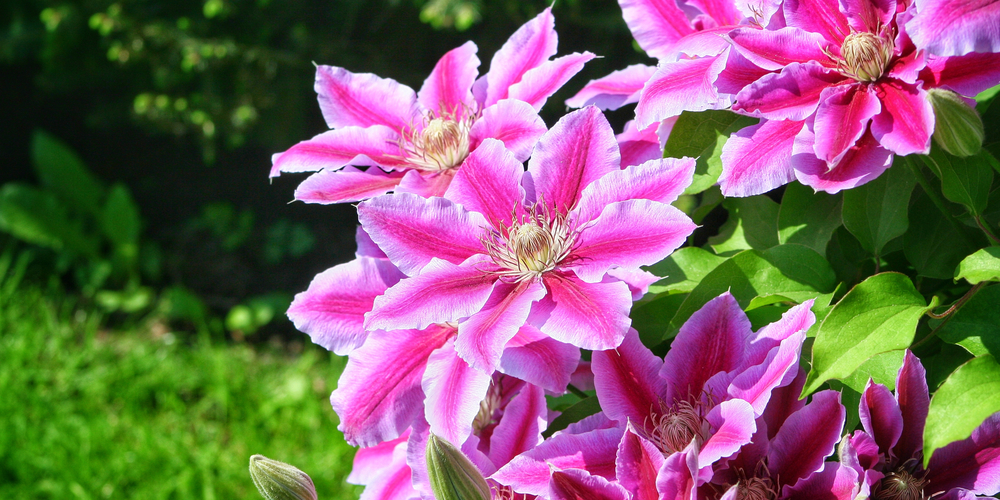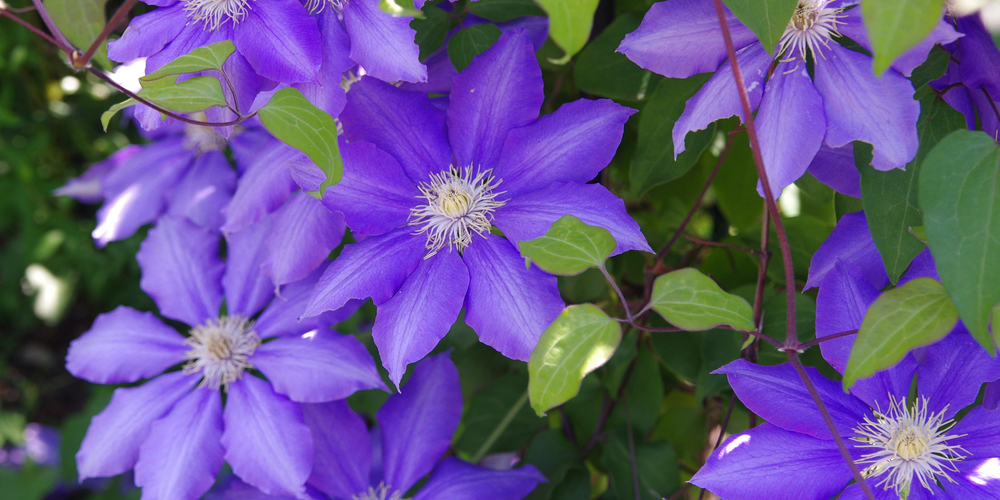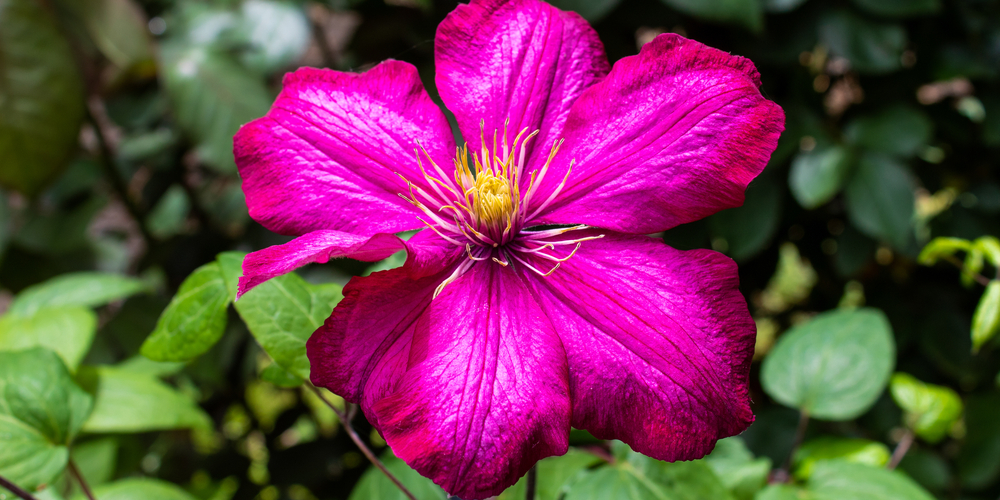If you’re not familiar with a clematis plant and its requirements, then it can be difficult working out if you have the right spot in your garden for one to grow. And one of the most difficult things to get right when planting anything is knowing if they will do well in shade, partial sunlight, or full sunlight. So, let’s focus on the clematis today and ask that all-important question: Can clematis grow in shade?
A General Note
Before we start looking at specifics, it’s a general rule of thumb that clematis plants need 6 hours of sunlight each day. This gives the clematis everything it needs to grow healthy and bloom as it should – showing off all those beautifully colored flowers.
So on the face of it, clematis plants can’t grow in full shade.
But as we’ve learned time and time again on this blog, gardening isn’t a subject that likes ‘general rules of thumb’, and, as always, there are many exceptions to the sweeping rules we create to make our gardening lives easier.
So in reality, yes, certain types of clematis grow well in shade. That means if you have a shady spot up for grabs in your garden, then you might still be able to grow certain types of clematis.
Before we look at which types of clematis grow best in the shade though, let’s look at some tips to give your shade-bound clematis the best chance of success!
Tips For Growing Clematis In The Shade
Here’s everything you need to know:
1. Try To Grow Your Clementis Up A Fence
A fence is a better choice than a wall if your clematis is going to be in the shade most of the time. Why? Because at least then the very top of your clematis plant will be able to reach for sunlight, and this will help the plant be much healthier. A clematis in the shade all the time won’t grow well, but if you can place your clematis against a fence where it can get some sunlight for some of the day, then that’s better than none at all.
2. Look Out For Large-Flowered Hybrids
These hybrid varieties have been specifically bred to allow them to do better in more shade than a clematis would usually like. This is a great thing for you if you don’t have an area that will provide a clematis plant with the 6 hours of sunlight it needs per day to really thrive.
Often hybrid varieties still look like traditional clematis plants, so you aren’t missing out on those wall-climbing, beautifully blooming plants you love, but you just have one that’s better suited to your current shaded spot that you have available.
Clematis Plants That Do Best In The Shade
This might be a little misleading, so let us clear this up for a moment. Clematis plants don’t grow best in the shade – almost all of them grow best when in sunlight for at least 6 hours of the day. However, the following clematis plants do better than other species in the shade, so you have a much better chance of success when growing these clematis plants in your shaded spot.
Clematis Piilu
The Clematis Piilu is a gorgeous clematis plant that does better than most in shade. This large flowered variety blooms twice a year, once in spring and once in summer, and it looks delightful in any garden with its beautiful bright flowers.
Clematis Gurnsey Cream
The Clematis Gurnsey Cream is an early large flowered clematis that also does well in shade. The beautiful, creamy-white flowers are a great statement piece in any garden, and can take any shaded spot and make it instantly more romantic and attractive.
Clematis Bees Jubilee
The Clematis Bees Jubilee is an example of a large flowered clematis hybrid that retains all the magic of a pure clematis flower, but actually grows really well in shade. The interesting striped flowers are the main reason for this, as the stripes are more defined in shaded areas and can actually dull in full sunlight.
Clematis Montana Grandiflora
With ‘Grandiflora’ in the title, you’d expect the Clematis Montana Grandiflora to be a pretty special plant – and it is. The beautiful single white flowers that shine against the dark green foliage are spectacular, and the yellow dots in the center of the flowers add a small splash of color. Better yet? They grow better in shade than most other clematis plants will, too!
Clematis Alpina Blue Dancer
Clematis Alpina Blue Dancer plants are some of the first clematis plants to bloom in the spring, making these a fan favorite. The sapphire blue flowers are stunning with their white centers, and because the sepals of the flowers are so long, this clematis plant actually sways quite a bit in the wind. A light wind is graceful, but strong winds threaten to tear the flower heads off – and that’s why a shaded, protected spot works best for this plant.
Can clematis grow in shade?: Conclusion
Overall, in answer to today’s main question, yes, clematis can grow in shade. Certain types are better suited to it than others, and you should at least try to get part of the plant into sunlight for 6 hours a day. But if you’re struggling to do that, consider buying one of the clematis species on our list because you’ll be much more likely to have success with it in the shade!


